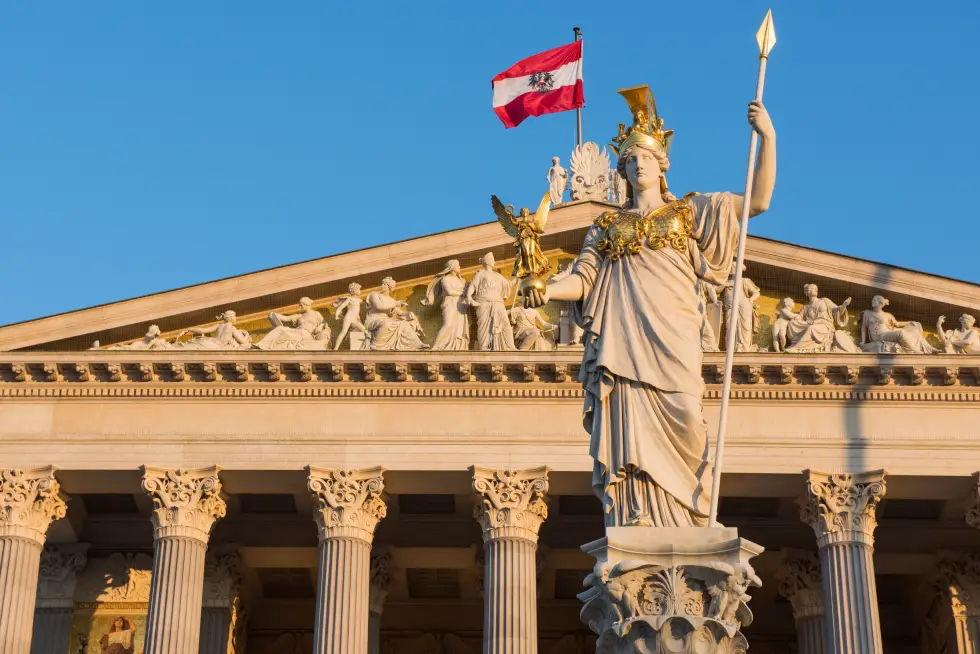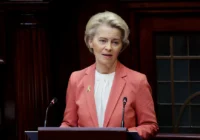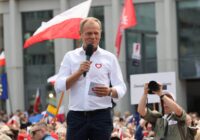The results of Austria’s September 29 parliamentary election did not differ much from what polls had indicated for over a year. Nevertheless, they came as a surprise to the political establishment. The Freedom Party (FPÖ) emerged as the clear winner with its historically best result of 28.8%, gaining 12.7 percentage points compared to the last election, which was overshadowed by the so-called Ibiza affair.
The two largest parties followed: the centrist People’s Party (ÖVP) with 26.2% and the Social Democratic Party (SPÖ) with 21.1%. The results mark a seismic shift in voter preferences. The ÖVP suffered the biggest loss for a governing party in history, dropping 11.2 points. The SPÖ saw their worst-ever vote since World War II.
The liberal NEOS, the only party without prior government experience, achieved its best result with 9.1%, gaining 1.0 point over its last showing. Meanwhile, the Green Party, which had served as the junior coalition partner over the past four years, secured just 8.2% of the vote, a loss of 5.7 points. The results are widely seen as a protest against the ruling coalition between the People’s Party and the Greens. Their shared 51% in the 2019 elections plummeted to only 36.6%.
The ÖVP-Green tenure faced undeniable challenges. Issues including the COVID-19 pandemic, high inflation and the Russian war in Ukraine plagued the partnership. The FPÖ capitalized on these crises by positioning itself as a vocal critic and, at times, leaning on conspiracy theories. In contrast, other parties aimed to cooperate with the government and avoided polarizing the public further. The FPÖ used its own platforms, such as YouTube and social media, to spread messages that would not appear in mainstream media. Voters viewing themselves as disaffected resonated with these messages.
When no one wants to govern with the populists
The FPÖ won the election, but just with a plurality of seats. Only the ÖVP sees a possible coalition with the FPÖ. However, they attached a significant condition. Karl Nehammer, the ÖVP chairman and current Austrian Chancellor, demanded that Herbert Kickl, the FPÖ leader, not be part of a coalition. This demand is unacceptable to the FPÖ. Kickl’s leadership was central to their record-breaking electoral success.
Winning the battle but not the war is a familiar scenario in elections across the region. Just a year earlier, Poland’s right-wing populist Law and Justice (PiS) party won an election by a narrow margin after governing for eight consecutive years. Although it was clear they would be unable to form a government, President Andrzej Duda still entrusted them with the task. Two valuable months were ultimately lost in negotiations destined to fail. In contrast, Austrian President Alexander Van der Bellen took a different approach. He first met with all parties that passed the electoral threshold to discuss potential coalition intentions. Following these discussions, he confirmed what had already been stated publicly: No party was willing to form a coalition with the FPÖ.
As a result, Van der Bellen encouraged the three largest parties to explore coalition options among themselves. After both the ÖVP and SPÖ confirmed they had no interest in allying with the FPÖ but would consider working together, Van der Bellen formally tasked Nehammer with forming a new government. Unlike in Germany, where parties commonly work together to isolate the far-right Alternative for Germany, a cordon sanitaire has not been the norm in Austria. The FPÖ has previously served as a junior coalition partner on three occasions.
Austria’s future government
Currently, the ÖVP and SPÖ are negotiating with each other and seeking a third coalition partner. They hold exactly the 92 seats that are necessary for a majority. In reality, this is a tight bind. Potential illnesses or absences among MPs limit political maneuvering and efficiency. Therefore, a third partner is necessary. This too brings its own issues. Challenges arise between governing with either the liberal NEOS or the Greens. To reach a broad consensus, each party may have to compromise on key issues. The Social Democrats advocate for new taxes on businesses and inheritance, which the liberal NEOS oppose. A continued coalition with the Greens may be less advantageous politically for the People’s Party (ÖVP), as it has not been popular with voters.
The election result is a clear signal that change is needed in Austrian politics. Due to these policy differences, negotiations may take time, and a government might not even be formed before Christmas. Although the chances of a new election are low, they cannot be entirely ruled out. Electoral results in the federal state of Vorarlberg and upcoming elections in Styria put extra pressure on party leaders to come up with a solution. Vorarlberg has already shown the continuation of the good results for the FPÖ, although the ÖVP was able to keep their first place. In Styria, the situation could be reversed in the upcoming vote, which might undermine Nehammer’s refusal to work with Kickl. At the least, a strong FPÖ showing in Styria could spark a debate about his leadership within the ÖVP. SPÖ leader Andreas Babler is internally contested, leaving the third largest party with little breathing room. The FPÖ is already labeling the negotiations as being run by a “coalition of losers,” noting their decreased popularity from past elections.
One of the primary challenges facing the new government will be Austria’s struggling economy, which is projected to be in recession for the second consecutive year. National debt is also surpassing acceptable levels under the Maastricht criteria set by the EU. In these already unfavorable circumstances, there will be the task of proving that the new coalition can work credibly together for the future of the country. There have not been any experiences with three parties in Austria, unlike neighboring Germany. The German government proves the difficulty of balancing multiple parties’ interests. The recent collapse of the coalition does certainly not advocate for such a model. In any case, failure only benefits the FPÖ. Despite his loud protesting, Kickl most likely prefers the role of opposition leader to continue feeding his victim narrative and build on his election result.
Austria’s international position
No matter what the next coalition in Austria looks like, we can already draw some conclusions: The far-right in the EU continues its success throughout the latest elections. The Patriots for Europe faction in the European Parliament has now received the most votes in national elections in France, the Netherlands, Hungary and Austria. The Czech Republic will likely follow next year.
Even if they are not part of the government in all of these nations, the far right is shaping the political discourse. This can already be felt on the European level. One issue is migration. Border controls have been reintroduced in Germany, where state elections have seen the rise of the far-right, even if they are not (yet) polling at the first place nationally. Another possibility is the emergence of a nationalist, anti-migration, anti-transatlantic party on the left side of the spectrum taking part of some of these state governments. Despite only being founded earlier this year, a party with similar policies joined the government in Slovakia.
What unites both left and right-wing extremists is their pro-Russian narratives. This is bad news for Ukraine, as they are losing support in Central Europe, a region that has mostly experienced Soviet occupation. Seemingly, everyone has forgotten their historical experiences. Pertinently, Austria lies only about 430 kilometers (267 miles) from Ukraine. With US President Donald Trump now returning to the White House, this might even result in abandoning support for Kyiv, coupled with shattering the security architecture in Europe. The external and internal threat coming from the Kremlin has the possibility to further erode democracy within Europe and the European Union, bringing it to the brink of collapse
Austria might just have been another piece in the puzzle if they cannot counter appropriately as mentioned above. A phrase from Karl Kraus comes to mind, who called Austria in the interwar period the “experimental station of the end of the world.” However, this has already been used to describe the inauguration of a new government a decade ago. But then there is another (most likely wrongly ascribed) quote from Kraus: “if the end of the world comes, I will go to Vienna, because everything happens there ten years later.”
[Stephen Chilimidos edited this piece.]
The views expressed in this article are the author’s own and do not necessarily reflect Fair Observer’s editorial policy.
Support Fair Observer
We rely on your support for our independence, diversity and quality.
For more than 10 years, Fair Observer has been free, fair and independent. No billionaire owns us, no advertisers control us. We are a reader-supported nonprofit. Unlike many other publications, we keep our content free for readers regardless of where they live or whether they can afford to pay. We have no paywalls and no ads.
In the post-truth era of fake news, echo chambers and filter bubbles, we publish a plurality of perspectives from around the world. Anyone can publish with us, but everyone goes through a rigorous editorial process. So, you get fact-checked, well-reasoned content instead of noise.
We publish 2,500+ voices from 90+ countries. We also conduct education and training programs
on subjects ranging from digital media and journalism to writing and critical thinking. This
doesn’t come cheap. Servers, editors, trainers and web developers cost
money.
Please consider supporting us on a regular basis as a recurring donor or a
sustaining member.
Will you support FO’s journalism?
We rely on your support for our independence, diversity and quality.









Comment